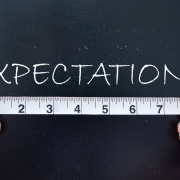Bracing + exercises + adherence to treatment = a recipe for successful treatment!
Idiopathic scoliosis is a disease that causes abnormal growth of the spine. Once a spinal curve has appeared, the vertebrae of a young patient are liable to become deformed in the three planes of space. This risk persists until he or she has finished growing.
Through conservative treatment, we aim to ensure that our patients, as adults, will have a strong back. In other words, we want them to reach adulthood with a healthy and functional spine, and that does not necessarily mean a perfectly straight one!
Therapy is therefore undertaken in order to try and limit the natural worsening of scoliosis curves through treatments proportionate to the severity of the condition.
To this end, there exist two main methods: specific physical exercises and bracing, and both need to be applied correctly and with the necessary adherence to treatment.
To decide whether a young patient needs to be prescribed a brace, the treating physician considers a series of factors, for example the size of the curve, the patient’s bone age, and whether or not he/she presents asymmetries (of hips, pelvis, scapulae, shoulders and so on).
When bracing is deemed warranted, we urge our youngsters to adhere scrupulously to the instructions given in order not to compromise the effectiveness of the treatment, and indeed to obtain the best possible correction.
This means that they must fasten and tighten their brace correctly, as shown by our doctors during the testing phase. If they do this, their brace will be less visible under their clothing; it will also be less prone to move about when they are walking, running and even sitting, and therefore more comfortable.
In addition to being more visible under clothes, a brace that is worn too loosely is less effective: it will not give the results that would have been achieved by wearing it properly.
According to data we have gathered, bracing treatment should produce its most marked results in the first months, and adhering to the prescribed number of brace-on hours is what makes the difference in this regard.
Bracing treatment is always prescribed together with specific physical exercises, i.e., 15-20 minutes per day of spinal self-correction and stabilisation exercises that help patients get into the habit of regularly correcting their posture themselves, even during the hours they are permitted to leave their brace off.
We constantly remind our patients that whenever they remove their brace, self-correction becomes all important, and that “voluntary and active” self-correction works just like the brace itself does. Clearly, though, this demands good self-awareness on their part and a willingness to collaborate.
In “Specific exercises performed in the period of brace weaning can avoid loss of correction in Adolescent Idiopathic Scoliosis (AIS) patients: Winner of SOSORT’s 2008 Award for Best Clinical Paper”, we showed that patients who regularly did specific exercises obtained a stable result when they finally stopped wearing their brace. Instead, those who did specific exercises discontinuously showed a worsening of a few degrees, while the curves of those who did no exercises at all worsened by an average of 10 Cobb degrees or more.
And it is important to remember that all these patients were prescribed the same type of brace, and the same number of bracing hours.
Brace weaning, which is carefully monitored by the physician, must be done extremely gradually, as the spine needs time to adapt to the absence of an external support. This is particularly true in the case of patients treated for very severe curves. During this delicate phase, self-correction exercises become even more important, helping to prevent the spine from once again collapsing in the direction of the curve.
We often say that strength comes from within: a patient’s own determination to wear his/her brace consistently and do his/her exercises correctly will together help to ensure that conservative treatment is a success – and it is important to understand correction of the scoliotic curve is not the only measure of success. Success also means stabilising the curve and curbing its tendency to worsen as the patient grows.












Leave a Reply
Want to join the discussion?Feel free to contribute!